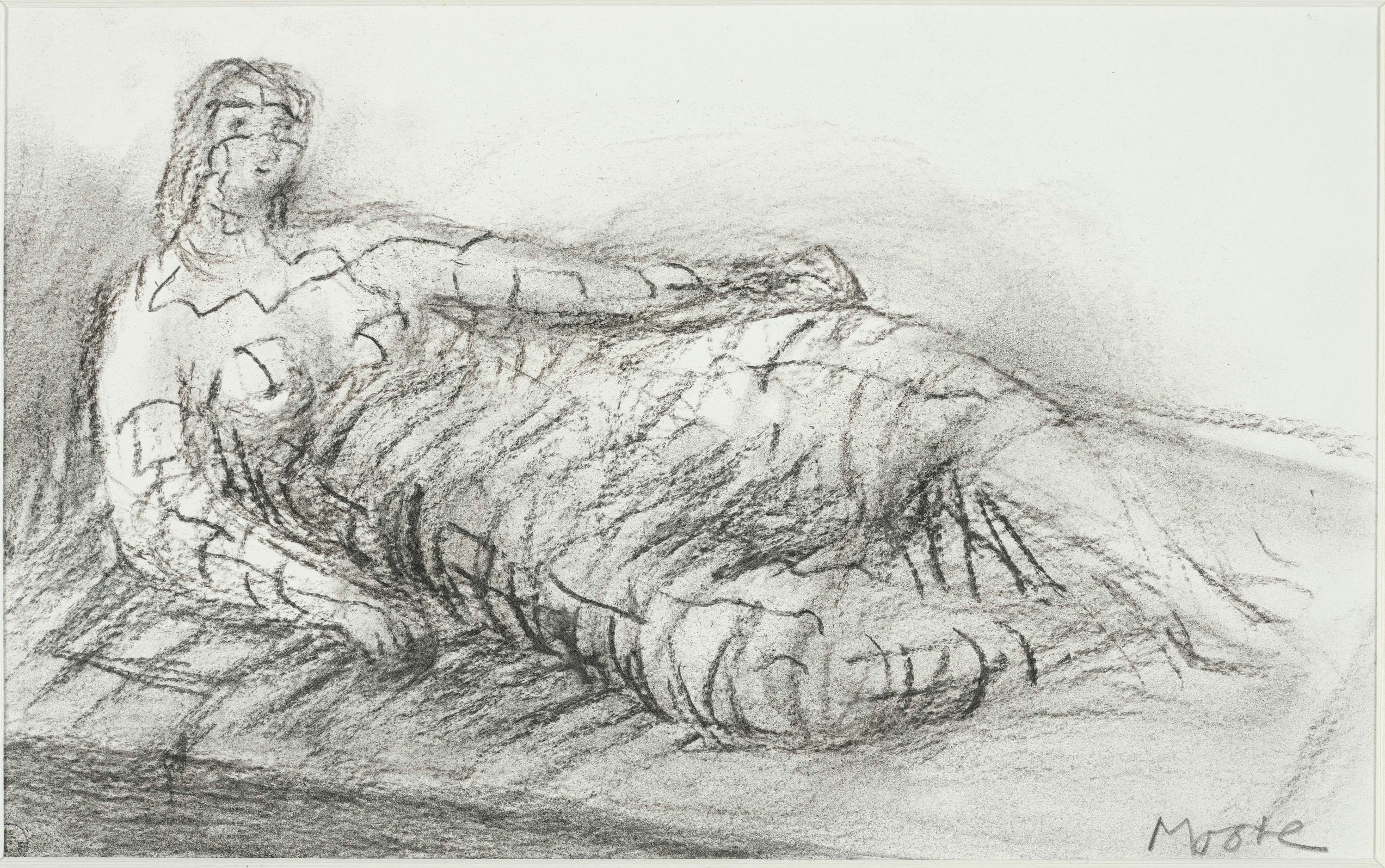Reclining figure
Henry Moore (Castleford, Yorkshire, 1898 - Much Hadham, Hertfordshire, 1986)
In the 1920s, he trained first in Leeds and then in London, being stimulated by the knowledge of African and Aztec sculpture from the British Museum and attending a lively circle of intellectuals. In 1922, he created his first sculpture, Mother and Child, a subject on which he would focus for his entire life. From that time onwards, he combined sculpture with the practice of drawing, which also remained constant over the following decades. In 1929, he made his first Reclining Figure in brown Hornton stone, which was inspired by the Chac Mool, a typical sculpture of the Aztec culture with an altar function, while in 1930 he made another version of it, this time by carving it on a stone found on the beach. This model of a human figure in a reclining position and with its head turned to the right is present through the entire production of the artist, who proposed many variations of poses and materials. During the 1940s, when Moore's production moved towards the elaboration of pure abstract forms, also Reclining Figures were involved in the process, showing an influence by Surrealism. The traces of this theme will also remain in the graphic production of the Second World War, which was dominated by the “shelter drawings”, a series of drawings where the London Underground was represented as an air-raid shelter thanks to which Moore earned the title of Official War Artist. This drawing, however, seems to refer mainly to the post-war production, when Reclining Figures acquired a greater three-dimensional consistency and were clothed in a drapery. This aspect, which was already present in the “shelter drawings”, was later brought into focus by the artist following his trip to Greece in 1951. What interested him was in fact the fabric's ability to highlight certain parts of the body while hiding others, through a dense pattern of folds. Some Draped Reclining Women of 1952-1953 anticipate the elaboration of the bronze specimens of 1957-58, such as the one that is currently in the Yorkshire Sculpture Park or at the Kunstgebäude in Stuttgart, which can be considered the forefathers of our drawing in which Moore confirmed the speed of the stroke and the use of chiaroscuro in a plastic function. The work was donated to the Uffizi by art collector Giuliano Gori in 1994, who was the main supporter of a donation campaign aimed at compensating the Florentine museum for the damage suffered following the bombing of Via dei Georgofili. The choice seems significant considering the artist's bond with the city that welcomed him as a student in 1925, and then dedicated a large monographic exhibition to him at Forte Belvedere in 1972.
